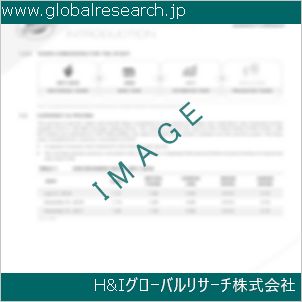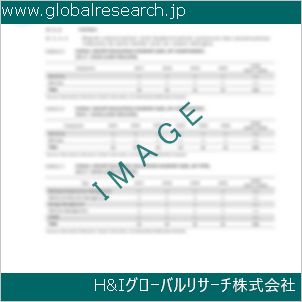Table of Contents
1 Industry Overview of Copper
1.1 Definition and Specifications of Copper
1.1.1 Definition of Copper
1.1.2 Specifications of Copper
1.2 Classification of Copper
1.3 Applications of Copper
1.3.1 Nuclear Application
1.3.2 Non-Nuclear Application
1.4 Industry Chain Structure of Copper
1.5 Industry Overview and Major Regions Status of Copper
1.5.1 Industry Overview of Copper
1.5.2 Global Major Regions Status of Copper
1.6 Industry Policy Analysis of Copper
1.7 Industry News Analysis of Copper
2 Manufacturing Cost Structure Analysis of Copper
2.1 Raw Material Suppliers and Price Analysis of Copper
2.2 Equipment Suppliers and Price Analysis of Copper
2.3 Labor Cost Analysis of Copper
2.4 Other Costs Analysis of Copper
2.5 Manufacturing Cost Structure Analysis of Copper
2.6 Manufacturing Process Analysis of Copper
3 Technical Data and Manufacturing Plants Analysis of Copper
3.1 Capacity and Commercial Production Date of Global Copper Major Manufacturers in 2023
3.2 Manufacturing Plants Distribution of Global Copper Major Manufacturers in 2023
3.3 R&D Status and Technology Source of Global Copper Major Manufacturers in 2023
3.4 Raw Materials Sources Analysis of Global Copper Major Manufacturers in 2023
4 Capacity, Production and Revenue Analysis of Copper by Regions, Types and Manufacturers
4.1 Global Capacity, Production and Revenue of Copper by Regions 2019-2024
4.2 Global and Major Regions Capacity, Production, Revenue and Growth Rate of Copper 2019-2024
4.3 Global Capacity, Production and Revenue of Copper by Types 2019-2024
4.4 Global Capacity, Production and Revenue of Copper by Manufacturers 2019-2024
5 Price, Cost, Gross and Gross Margin Analysis of Copper by Regions, Types and Manufacturers
5.1 Price, Cost, Gross and Gross Margin Analysis of Copper by Regions 2019-2024
5.2 Price, Cost, Gross and Gross Margin Analysis of Copper by Types 2019-2024
5.3 Price, Cost, Gross and Gross Margin Analysis of Copper by Manufacturers 2019-2024
6 Consumption Volume, Consumption Value and Sale Price Analysis of Copper by Regions, Types and Applications
6.1 Global Consumption Volume and Consumption Value of Copper by Regions 2019-2024
6.2 Global and Major Regions Consumption Volume, Consumption Value and Growth Rate of Copper 2019-2024
6.3 Global Consumption Volume and Consumption Value of Copper by Types 2019-2024
6.4 Global Consumption Volume and Consumption Value of Copper by Applications 2019-2024
6.5 Sale Price of Copper by Regions 2019-2024
6.6 Sale Price of Copper by Types 2019-2024
6.7 Sale Price of Copper by Applications 2019-2024
6.8 Market Share Analysis of Copper by Different Sale Price Levels
7 Supply, Import, Export and Consumption Analysis of Copper
7.1 Supply, Consumption and Gap of Copper 2019-2024
7.2 Global Capacity, Production, Price, Cost, Revenue, Supply, Import, Export and Consumption of Copper 2019-2024
7.3 USA Capacity, Production, Price, Cost, Revenue, Supply, Import, Export and Consumption of Copper 2019-2024
7.4 EU Capacity, Production, Price, Cost, Revenue, Supply, Import, Export and Consumption of Copper 2019-2024
7.5 China Capacity, Production, Price, Cost, Revenue, Supply, Import, Export and Consumption of Copper 2019-2024
7.6 Japan Capacity, Production, Price, Cost, Revenue, Supply, Import, Export and Consumption of Copper 2019-2024
8 Major Manufacturers Analysis of Copper
8.1 Manufacturer One
8.1.1 Company Profile
8.1.2 Product Picture and Specifications
8.1.2.1 Type I
8.1.2.2 Type II
8.1.2.3 Type III
8.1.3 Capacity, Production, Price, Cost, Gross and Revenue
8.1.4 Contact Information
8.2 Manufacturer Two
8.2.1 Company Profile
8.2.2 Product Picture and Specifications
8.2.2.1 Type I
8.2.2.2 Type II
8.2.2.3 Type III
8.2.3 Capacity, Production, Price, Cost, Gross and Revenue
8.2.4 Contact Information
8.3 Manufacturer Three
8.3.1 Company Profile
8.3.2 Product Picture and Specifications
8.3.2.1 Type I
8.3.2.2 Type II
8.3.2.3 Type III
8.3.3 Capacity, Production, Price, Cost, Gross and Revenue
8.3.4 Contact Information
8.4 Manufacturer Four
8.4.1 Company Profile
8.4.2 Product Picture and Specifications
8.4.2.1 Type I
8.4.2.2 Type II
8.4.2.3 Type III
8.4.3 Capacity, Production, Price, Cost, Gross and Revenue
8.4.4 Contact Information
8.5 Manufacturer Five
8.5.1 Company Profile
8.5.2 Product Picture and Specifications
8.5.2.1 Type I
8.5.2.2 Type II
8.5.2.3 Type III
8.5.3 Capacity, Production, Price, Cost, Gross and Revenue
8.5.4 Contact Information
…
9 Marketing Trader or Distributor Analysis of Copper
9.1 Marketing Channels Status of Copper
9.2 Traders or Distributors with Contact Information of Copper by Regions
9.3 Ex-work Price, Channel Price and End Buyer Price Analysis of Copper
9.4 Regional Import, Export and Trade Analysis of Copper
10 Industry Chain Analysis of Copper
10.1 Upstream Major Raw Materials Suppliers Analysis of Copper
10.1.1 Major Raw Materials Suppliers with Contact Information Analysis of Copper
10.1.2 Major Raw Materials Suppliers with Supply Volume Analysis of Copper by Regions
10.2 Upstream Major Equipment Suppliers Analysis of Copper
10.2.1 Major Equipment Suppliers with Contact Information Analysis of Copper
10.2.2 Major Equipment Suppliers with Product Pictures Analysis of Copper by Regions
10.3 Downstream Major Consumers Analysis of Copper
10.3.1 Major Consumers with Contact Information Analysis of Copper
10.3.2 Major Consumers with Consumption Volume Analysis of Copper by Regions
10.4 Supply Chain Relationship Analysis of Copper
11 Development Trend of Analysis of Copper
11.1 Capacity, Production and Revenue Forecast of Copper by Regions and Types
11.1.1 Global Capacity, Production and Revenue of Copper by Regions 2024-2029
11.1.2 Global and Major Regions Capacity, Production, Revenue and Growth Rate of Copper 2024-2029
11.1.3 Global Capacity, Production and Revenue of Copper by Types 2024-2029
11.2 Consumption Volume and Consumption Value Forecast of Copper by Regions, Types and Applications
11.2.1 Global Consumption Volume and Consumption Value of Copper by Regions 2024-2029
11.2.2 Global and Major Regions Consumption Volume, Consumption Value and Growth Rate of Copper 2024-2029
11.2.3 Global Consumption Volume and Consumption Value of Copper by Types 2024-2029
11.2.4 Global Consumption Volume and Consumption Value of Copper by Applications 2024-2029
11.3 Supply, Import, Export and Consumption Forecast of Copper
11.3.1 Supply, Consumption and Gap of Copper 2024-2029
11.3.2 Global Capacity, Production, Price, Cost, Revenue, Supply, Import, Export and Consumption of Copper 2024-2029
11.3.3 USA Capacity, Production, Price, Cost, Revenue, Supply, Import, Export and Consumption of Copper 2024-2029
11.3.4 EU Capacity, Production, Price, Cost, Revenue, Supply, Import, Export and Consumption of Copper 2024-2029
11.3.5 China Capacity, Production, Price, Cost, Revenue, Supply, Import, Export and Consumption of Copper 2024-2029
11.3.6 Japan Capacity, Production, Price, Cost, Revenue, Supply, Import, Export and Consumption of Copper 2024-2029
12 New Project Investment Feasibility Analysis of Copper
12.1 New Project SWOT Analysis of Copper
12.2 New Project Investment Feasibility Analysis of Copper
13 Conclusion of the Global Copper (CAS 7440-50-8) Industry 2024 Market Research Report
| ※参考情報 銅(Copper)は、化学記号Cu、およびCAS番号7440-50-8で表される金属元素です。銅は、古代から広く知られ、利用されてきた金属の一つで、人類の歴史において重要な役割を果たしてきました。その特性や用途、関連技術について詳しく見ていきましょう。 まず、銅の基本的な定義について説明いたします。銅は周期表の第11族に属する遷移金属で、特に優れた導電性と延性を持つことが特徴です。常温での色合いは鮮やかな赤色であり、酸化や腐食に対しても比較的耐性がありますが、空気中の酸素によって酸化銅(CuO)や緑青(Cu2(OH)2CO3)と呼ばれる化合物を生成することがあります。 銅の特徴には、いくつかの重要なポイントがあります。まず、その導電性は非常に高く、金属の中でも銀に次いで優れているとされています。このため、電気配線や電子機器内の部品として広く使用されているのです。また、熱伝導性も良好で、熱管理が求められる分野にも適しています。さらに、銅は加工が容易で、引き延ばしや打ち抜き加工が可能であるため、様々な形状の部品を作成することができます。 銅にはいくつかの種類がありますが、主に純銅と合金銅に分けられます。純銅は、99.9%以上の銅を含むもので、高い導電性と延性を持っています。一方、合金銅は、銅に他の金属を加えたものであり、用途に応じて特性を変えることができます。例えば、ブラス(黄銅)は銅と亜鉛の合金であり、耐食性や機械的強度が向上します。また、青銅は、銅にスズやアルミニウムを加えた合金で、耐摩耗性や加工性が優れるため、様々な産業で利用されています。 銅の用途は非常に広範囲にわたります。まず、電気産業においては、銅線や銅板がほとんどの電気機器に用いられています。これにより、効率的な電力の伝送が実現され、多くの機器が正常に動作しています。また、電子機器では、基板やコネクタなど多くの部品に銅が利用されており、冷却装置や配熱装置などへの応用も広がっています。 さらに、建設業界においても銅は重要な素材です。屋根材や配管、暖房システムの一部として利用され、耐久性や腐食抵抗が求められる環境においても信頼されています。また、装飾や芸術作品としての用途も多く、特にその優雅な色合いによる装飾品や彫刻は、人々に親しまれています。 関連技術としては、銅のリサイクル技術や新しい合金の開発が挙げられます。銅は、リサイクル性が非常に高く、廃棄物から再生銅を取り出すプロセスは確立されています。このため、環境への負荷を低減し、貴重な資源を効率的に利用することが可能です。また、新しい合金の開発研究も進んでおり、より高性能な素材の創出が期待されています。例えば、抗菌性を持つ特性を持つ銅合金が医療分野で注目され、様々な医療機器や施設に応用されています。 銅の利用は、環境問題やエネルギー問題への対応としても重要な役割を果たしています。例えば、再生可能エネルギー分野では、太陽光発電パネルや風力発電機の製造においても銅が重要な素材となっています。これにより、持続可能な社会の実現に向けての貢献も期待されています。 今後、銅はさらなる技術革新や環境への配慮が求められる中で、ますますその重要性が増していくと考えられます。i技術の進化により、新たな用途が開発される一方で、銅の持つ特性を生かした製品設計が進められています。持続可能な社会の構築に向けて、銅の重要性は今後も色褪せることなく、多くの分野で活躍し続けることでしょう。 |
❖ 免責事項 ❖
http://www.globalresearch.jp/disclaimer












